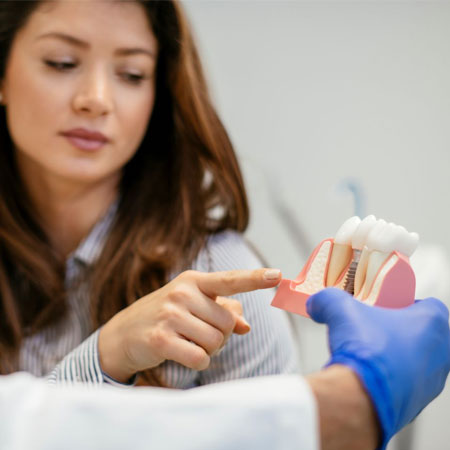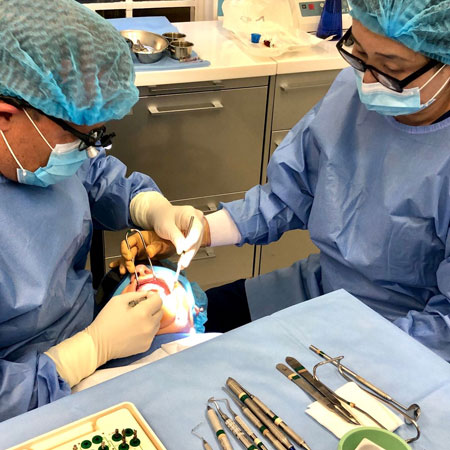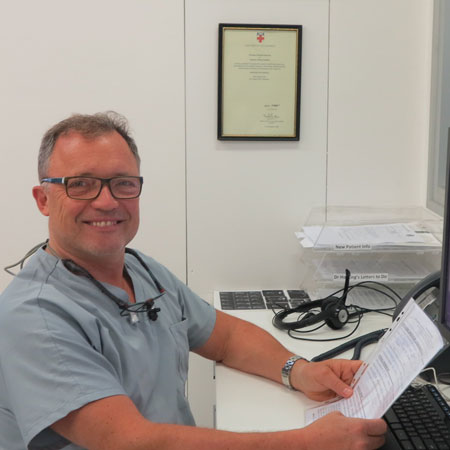Restorative Dentistry
The stages involved...
When performing dental restorative services, Dr Hocking and his team have a treatment process they follow detailed below.
If you have any questions about this process please contact us.
-

1. Consultation
Patients requiring complex crown and bridge work (whether it be tooth or implant-supported) require careful consultation prior to any form of preparation.
-

2. Restorative Treatment
Preparation of teeth, insertion of provisional restorations.
-

3. Review
Patients then return 2 to 3 weeks later, the provisional restorations are removed, and the definitive or final restorations are cemented in place.
Consultation
Patients requiring complex crown and bridge work (whether it be tooth or implant-supported) require careful consultation prior to any form of preparation. This is to ensure any specific or individual requirements are incorporated into the restoration.
Restorations involving the aesthetic or front part of the mouth require careful discussion to ensure patients have an input into the final outcome or appearance. Previous or historical photographs of a broad smile can be very helpful to a technician who is designing and fabricating the restoration. We often ask patients to visit with our technician so that very specific shade and shape information can be recorded by the technician himself.
Head technicians at our preferred laboratory, Alex and Harry, have been providing amazing aesthetic results for many years now, with glowing feedback from patients. www.dentalxpressions.com
See example aesthetic zone case for greater detail.
Restorative Treatment
Preparation of teeth is then carried out using local anaesthetic, and sometimes oral sedation if required.
Provisional restorations are then inserted for the time taken for the final crown or bridge work to be fabricated. It is essential to maintain excellent oral hygiene around provisional restorations to ensure excellent tissue health and an ideal environment for the sedimentation process.
Review
Patients then return 2 to 3 weeks later, the provisional restorations are removed, and the definitive or final restorations are cemented in place.
The bite occlusion is carefully checked to ensure even comfortable contact points. If the site is anaesthetised for the cementation process, it can sometimes be difficult for patients to give accurate feedback regarding whether the bite is comfortable not.
Sometimes patients may have to return once the anaesthetic has worn off for further minor occlusal or bite adjustment.